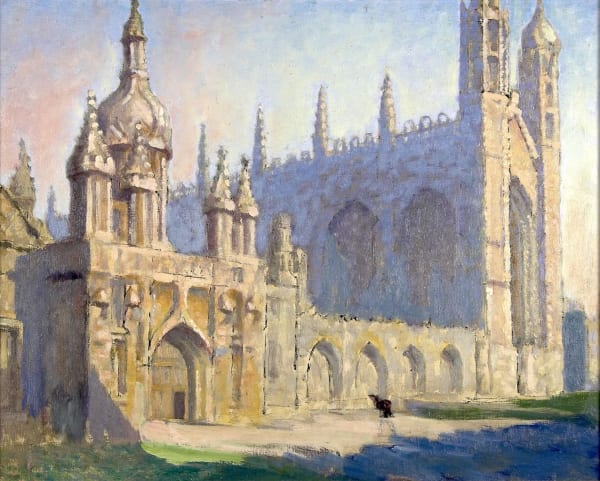Christopher Perkins British, 1891-1968
Christopher Edward Perkins was born in Peterborough, England, in 1891. After attending Gresham Free Grammar School, he trained at the Heatherley School of Art, studied briefly in Rome, and enrolled at the Slade School of Fine Art alongside artists such as Dora Carrington and Stanley Spencer. By 1914 he was familiar with French post-impressionism and had launched his professional career, marrying Agnes Berry Shaw that same year. He served with distinction in World War I, rising to acting captain. In the 1920s, he lived in France, publishing an essay on museums and painting French subjects while gaining recognition back in Britain. Though he unsuccessfully sought a teaching position in Cape Town, he continued to develop a style marked by strict attention to contour and surface pattern.
In 1928 Perkins was appointed under the La Trobe Scheme to teach at Wellington Technical College in New Zealand, arriving in early 1929 with hopes of helping forge a national artistic identity. He quickly realised the reality did not match his romantic vision of the South Seas: Victorian conventions still dominated, Maori art was hidden away, and local painting clung to English models. Nevertheless, he exhibited regularly and produced influential works such as Silverstream brickworks and Taranaki, introducing dramatic simplification and a modern approach to composition. His portraits and genre scenes were forcefully modelled, often provoking conservative critics but gradually earning sympathetic recognition. He argued that New Zealand’s harsh, clear light demanded a more truthful, drawing-based response to landscape.
Moving to Rotorua partly for his wife’s health and partly to engage with Maori subjects, Perkins produced portraits free of condescension and works that blended elements of Maori carving with European styles—raising, for later viewers, issues of cultural appropriation. Frustrated by the limited appreciation of his ideas and alienated by his own candid criticisms, he returned to England in 1934. He served again during the Second World War, worked as a war artist, and exhibited occasionally, but never regained the prominence he had in New Zealand. A romantic figure with unruly brown hair and craggy features, Perkins died in 1968. Despite the mixed reception in his lifetime, his commitment to formal clarity and local subjects made him a key figure in shaping interwar New Zealand art.



